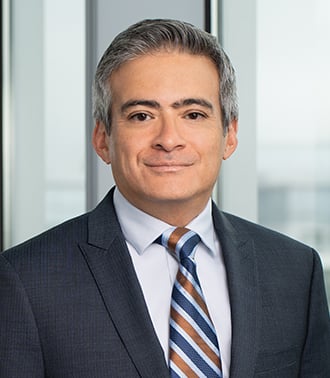Federal Trade Commission Abandons Appeal in Jefferson Health/Einstein Hospital Merger
The Federal Trade Commission (FTC or Commission) has decided to abandon its effort to enjoin the combination of Jefferson Health (Jefferson) and the Albert Einstein Healthcare Network (Einstein), ending a two-and-a-half year saga for the two Philadelphia area health systems, and marking a rare defeat for the FTC in a health system merger. The Commission voted 4-0 to voluntarily dismiss its appeal to the Third Circuit of the district court's denial of the FTC's motion for a preliminary injunction after the Third Circuit refused to stay the district court's decision pending appeal.
Procedural History
Jefferson agreed to acquire Einstein in an agreement dated September 14, 2018. On February 27, 2020, after more than a year of investigation, the FTC filed an administrative complaint seeking to permanently enjoin the proposed transaction. On the same day, the FTC filed a complaint in federal district court in the Eastern District of Pennsylvania for a temporary restraining order and preliminary injunction to preserve the status quo pending its administrative proceeding. After a lengthy period of discovery and a six-day evidentiary hearing, on December 8, 2020, District Judge Pappert denied the FTC's request for a preliminary injunction. The FTC filed an appeal to the Third Circuit but a three-judge panel of the Third Circuit, in a one-page order, summarily denied the FTC's request for an emergency stay pending appeal. On January 6, 2021, the Commission granted a motion from the defendants to withdraw the case from administrative adjudication. This procedural step allows the parties and FTC staff to discuss the case with the Commission, something that is not otherwise available in light of the rules erecting a wall between the administrative proceedings and the Commission once the Commission votes out a complaint.1
The FTC Complaint
The FTC alleged that the combination of Jefferson, the largest health system in the greater Philadelphia region, with Einstein, another provider in Philadelphia, would substantially reduce competition for inpatient general acute care hospital services in two geographic areas: (1) the "Northern Philadelphia Area" and (2) the "Montgomery Area" in Montgomery County to the northwest.2 The FTC alleged that post-merger shares in those two regions would be at least 60% and 45% respectively, with increases in post-merger market concentration that would make the transaction presumptively anticompetitive.3 The FTC argued that the elimination of competition between the two health systems would result in "increase[d] . . . bargaining leverage with commercial insurers" leading to higher reimbursement rates (i.e., prices).4
The FTC also for the first time alleged competitive harm in a market for what it termed "inpatient acute rehabilitation services" in the Philadelphia Area. The two health systems owned six of the eight inpatient rehabilitation facilities (IRFs) in Philadelphia, and FTC alleged that post-merger share would exceed 70%.5
The District Court's Decision
Judge Pappert held that the FTC failed to meet its burden of showing harm to competition in properly defined geographic markets by showing that "insurers would not avoid a price increase in any one of the [FTC's] proposed markets by looking to hospitals outside those markets."6 Thus, the FTC failed to establish its prima facie case showing that it was likely to succeed on the merits of its claim that the merger was anticompetitive.
Judge Pappert's disagreements with the FTC's case began with how he viewed the structure of the health care marketplace in the Philadelphia area. His opinion emphasized the "abundant healthcare options" in the densely populated, metropolitan area of southeastern Pennsylvania with 51 hospitals and Jefferson and Einstein representing just two of thirteen health systems in the region.7 He explicitly found that "Philadelphia's healthcare market is less consolidated than others around the country," and spent five pages of his opinion discussing the various other health system competitors in Philadelphia.8 He emphasized that Jefferson viewed other health systems like Penn Medicine as its "primary competition", rather than Einstein, whose main hospital had a high percentage of government-insured patients.9 In contrast, he found that the "commercial health insurance market is far more consolidated than the provider market" with the dominant insurer—Independence Blue Cross—having more than 50% share.10
The FTC's expert relied on the "hypothetical monopolist test" (HMT) to define the relevant geographic markets to evaluate the merger. This test asks whether, if a single firm became the only seller in a geographic area, it could impose a small but significant non-transitory increase in price (SSNIP) without customers buying from outside the area to defeat it. While it was undisputed that the expert's calculations showed a SSNIP in the FTC's proposed geographic markets, the court found that the "[g]overnment's candidate . . . markets focus[ed] more on patients, not the insurers who will bear the immediate impact of any price increases."11 The court found that the FTC's expert relied on patient diversion ratios in conducting the HMT, which did not answer the key question of whether "enough insurers, in the face of a SSNIP, would avoid the price increase by looking to hospitals outside the proposed geographic market."12 Further, the FTC's expert had not done any analysis to conclude there is correlation between the behavior of patients and insurers.
Judge Pappert found that the testimony of insurers was "neither unanimous, unequivocal nor supported by the record as a whole."13 The second largest insurer in the region (Aetna) had no concerns about the merger. While the largest insurer—Independence Blue Cross—opposed the merger, the court found "[t]he record does not support [IBC's] conclusory assertion that IBC would surrender to a price increase rather than steer its members to hospitals outside the Government's markets."14 In particular, the court emphasized how in its most recent contract negotiations, IBC threatened to terminate both Einstein and Jefferson, belying the notion that these health systems were critical to IBC building a viable network.15 The court also found that IBC had a "clear motive" to oppose the merger because it saw Jefferson as a potential competitive threat as an insurer and Jefferson would become more of a threat if it combined with Einstein.16 This was because Jefferson and Einstein each owned 25% of a Medicaid and Medicare insurer in the area, and Jefferson was attempting, in a separate transaction, to acquire the remaining 50%.
The court also rejected the FTC's proposed market for inpatient acute rehabilitation services. Even assuming such services could only be provided at IRFs, which was disputed, Judge Pappert found the proposed market failed to "correspond[] with commercial realities."17 As with inpatient general acute care services, Judge Pappert found the FTC's expert's HMT analysis—which focused on patient diversion ratios—wanting and found the insurer testimony opposing the merger lacking credibility. In particular, after finding that inpatient rehabilitation services played little meaningful role in provider-insurer negotiations, the court concluded that "[t]he relative insignificance of inpatient rehabilitation services to members and insurers contradicts the insurers' statements that they would accept price increases for inpatient rehabilitation services."18
The Appeal
In its brief for its emergency motion for an injunction pending appeal, the FTC argued that it was likely to succeed on the merits because Judge Pappert had committed reversible error in rejecting the FTC's geographic markets. In particular, the FTC asserted that Judge Pappert misapprehended that the patient diversion ratios in its expert's analysis were in fact correlated with the leverage a hypothetical monopolist would have vis-à-vis insurers.19 The FTC also argued that the district court had held the FTC to an improper standard of proof on a preliminary injunction motion by rejecting witness testimony that was not "unanimous or unequivocal."20
Conclusion
While the Third Circuit's denial of the preliminary injunction and the FTC's subsequent abandonment of its appeal means we will never know whether the FTC had the better of the argument, we can still draw a few conclusions. First, Judge Pappert's decision emphasizes yet again the critical importance of geographic market definition to hospital merger cases, and the impact on insurers remains the lodestone of that analysis. Second, drawing appropriate geographic market boundaries can be more difficult in densely populated, urban areas with many nearby hospitals. Third, the case highlighted the outsized role played by insurer testimony in hospital mergers, and emphasized that courts can and do make their own credibility determinations of that testimony. And, last, that it is premature to say that this case marks a turning point in hospital merger enforcement. In FTC v. Penn State Hershey and FTC v. Advocate, the FTC lost both cases at the district court level—on similar grounds as those here—only to prevail on appeal. We expect the FTC to continue to be aggressive in policing hospital mergers going forward.
© Arnold & Porter Kaye Scholer LLP 2021 All Rights Reserved. This Advisory is intended to be a general summary of the law and does not constitute legal advice. You should consult with counsel to determine applicable legal requirements in a specific fact situation.
-
FTC, Debbie Feinstein, "Changes to Commission Rule 3.26 re: Part 3 proceedings following federal court denial of a preliminary injunction," Mar. 16, 2015.
-
In re Thomas Jefferson University, FTC Docket No. 9392, Complaint, at ¶¶ 3, 5-6, 20.
-
-
-
-
FTC v. Thomas Jefferson University, No. 20-01113, Dec. 8, 2020, Slip Op. at 2-3.
-
-
-
-
-
-
Id. at 31-32 (emphasis added) (quoting FTC v. Penn State Hershey Med. Ctr., 838 F.3d 327, 342 (3d Cir. 2016)).
-
-
-
-
-
-
-
FTC v. Thomas Jefferson University, No. 20-3499, Dec. 11, 2020, Emergency Motion of the FTC for an Injunction Pending Appeal, at 15.
-


